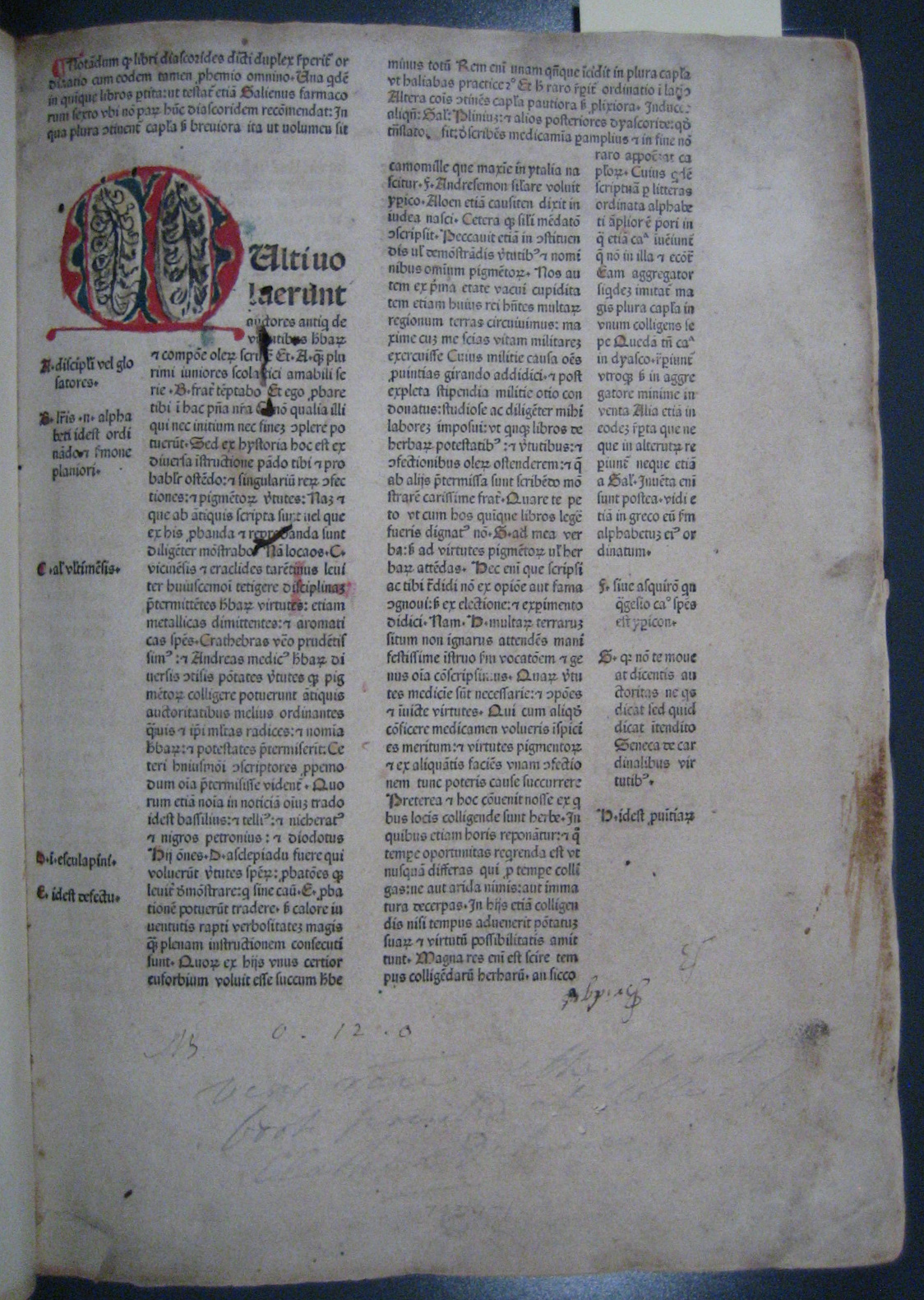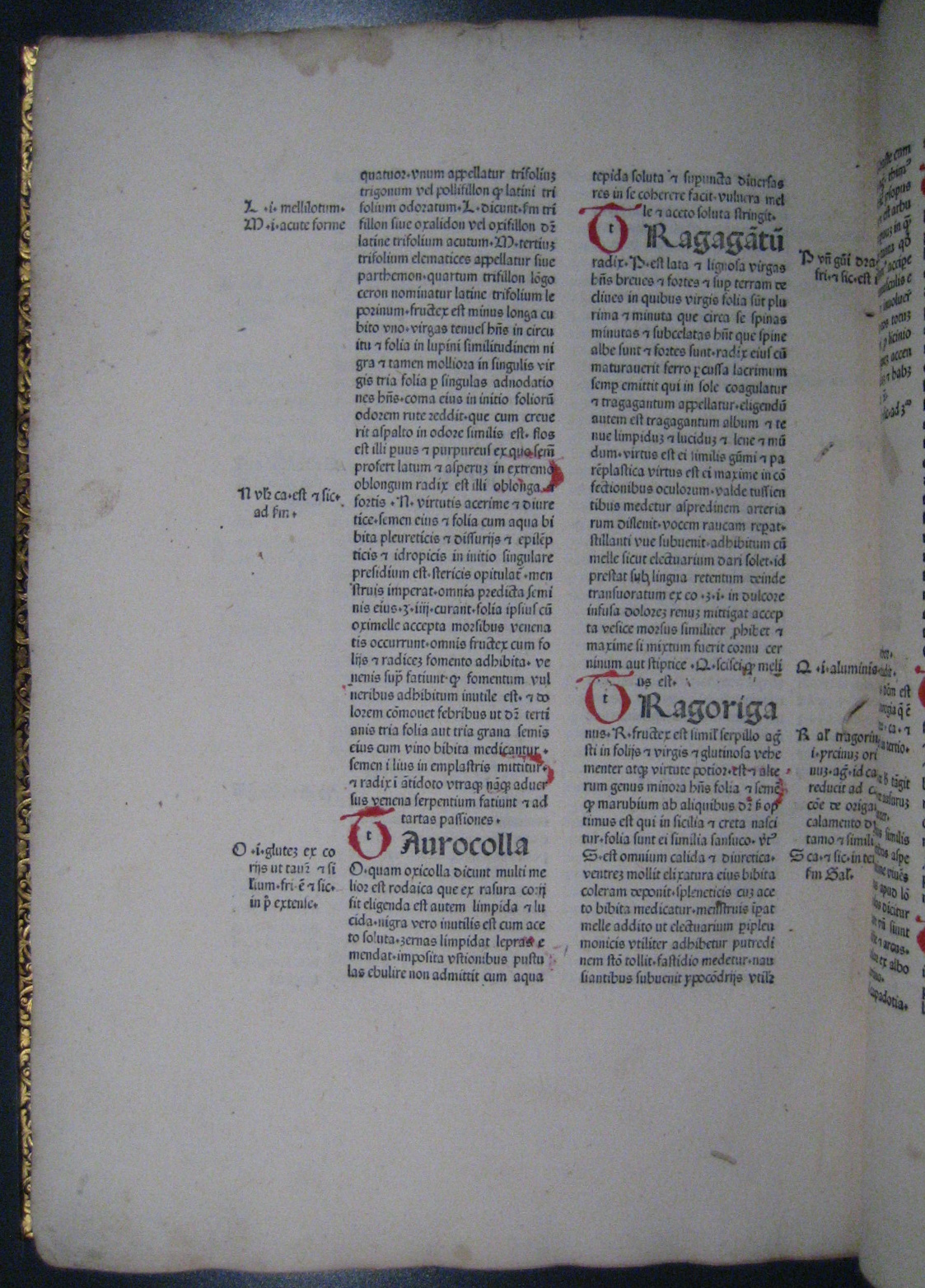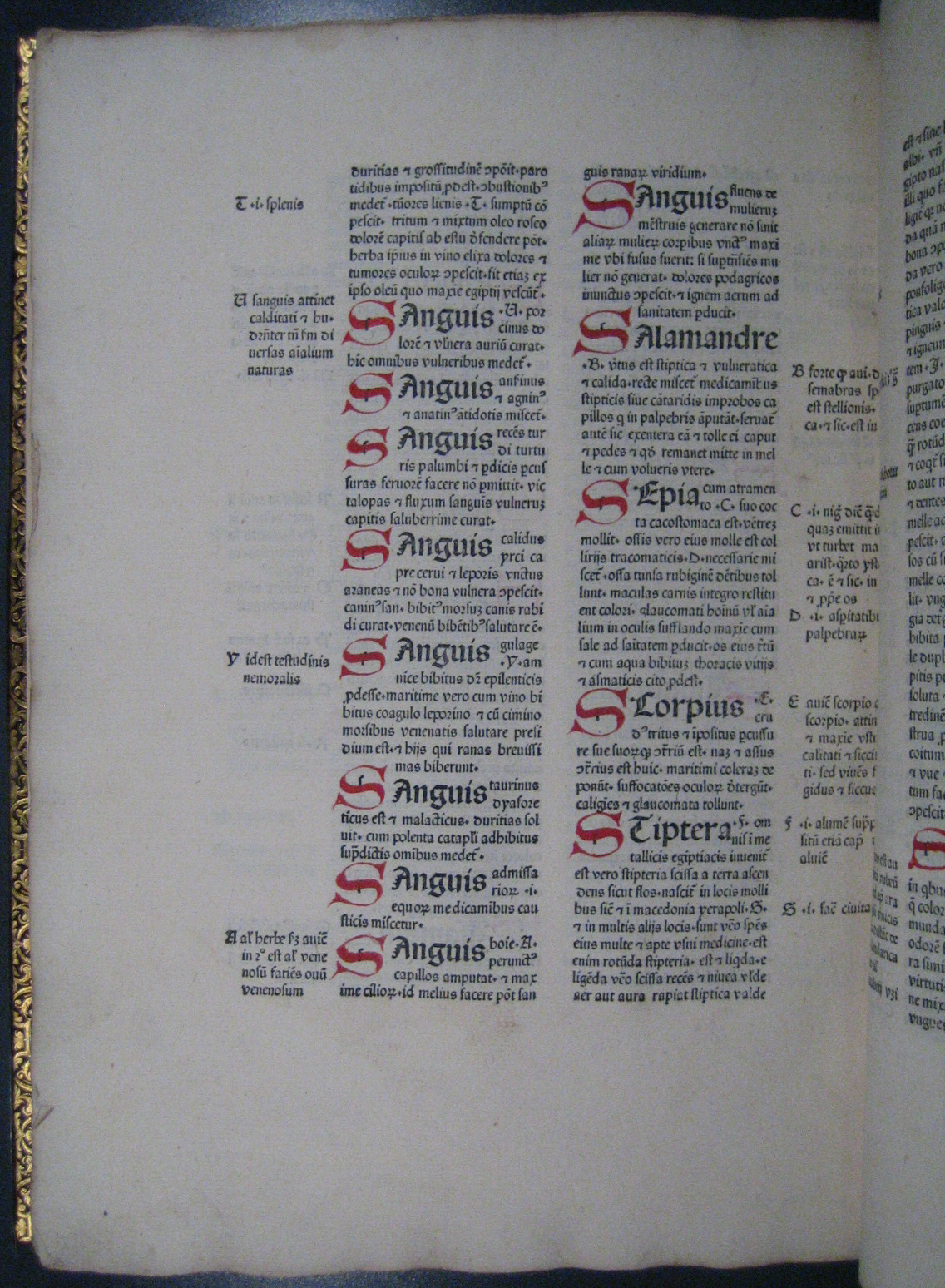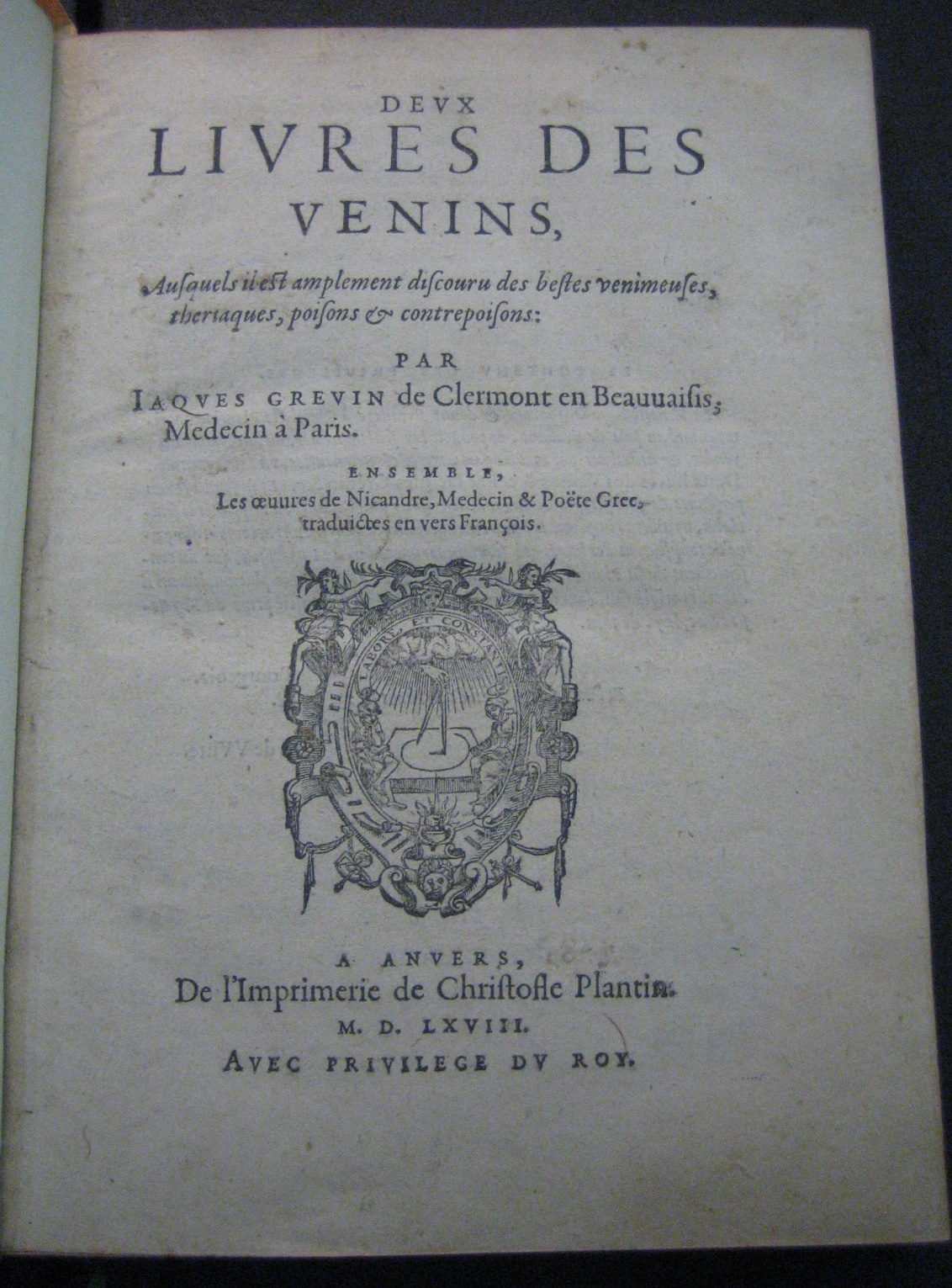



To demonstrate the validity of his thesis, Leoniceno collaborated with the printer and publisher Aldo Manuzio (1449-1515) in Venice to publish Greek scientific works in the original language. A major piece in this strategy was De materia medica compiled in the first century CE by the Greek Dioscorides. It was an encyclopedia that listed and described all the natural products used for the preparation of medicines of that time and known to Dioscorides, including venoms and poisons. Having exact terminology and precise description of these products would have allowed avoiding the mistakes generated by the uncertainty of the medieval medical lexicon.



II+177+II ff., 300 x 210 mm, *3, α–Ο4, π5, Α–Δ4, Ε3. Venice, Aldo Manuzio, 1499.
Greek (except f.1v, Latin preface). Space for rubricated initials left blank.
UCLA Young Research Library, Oversize: A1.D624d 1499
UCLA copy does not contain Nicander’s text.
Pages to be reproduced: f.145v–146r (interesting 2 column layout), and see bookmarks.
[JM]


II + 480 + III ff., 215 x 155 mm, A4–G4, H2. Anvers, Plantin, 1568.
French.
UCLA Young Research Library, Special Collections, Stacks: RA1201.G86d
Content: The first book of Venoms presents information based on classical Greek works. The second book discusses the use and misuse of antimony as a medical treatment. Grevin dedicated both these books to Queen Elizabeth I. The translation of Nicander also includes information about venoms. This text may be the only translation of Nicander’s work into French.
Jacques Grevin (1538-1570) was a physician, anatomist, poet, and dramatist born in Clermont-en-Beauvoisis. It is generally believed that about 1550 he was sent to Paris to study at the College of Boncourt. There he came into the circle of the famous writer Pierre de Ronsard, “the prince of poets.” In 1556 he became the equivalent of Bachelor of Arts and continued his studies. He was awarded a doctorate in March of 1563. He became part of the medical faculty director’s council under the direction of the Dean. However, following his conversion to Protestantism after the Wars of Religion began in France in 1562, he was permanently excluded. Ultimately his new religious beliefs cost him a position at the College.
During 1566 and 1567 he entered into the medical debates on the therapeutic use of antimony. It was through these efforts that it was banned by Parliament in 1567. That same year he went into exile. First to England, then on Anvers and finally to Turin where he became the personal physician to the Duchess of Savoy and tutor to her son. In addition to the present works, he published the first anatomy book in the French language (1567). He never lived to witness the enormous deaths which were to occur in his native in France, beginning St. Bartholomew’s Day, Paris, 1572. Jacques Grevin died at age 32 in 1570.
World Who’s Who in Science, 1st ed, 1968, p. 703; A History of Magic and Experimental Science, Vol. V, 1941 pp. 477-479, Taken by Surprise (play), Carleton University, 1985, pp. 4-6, 8-9.
[SH]